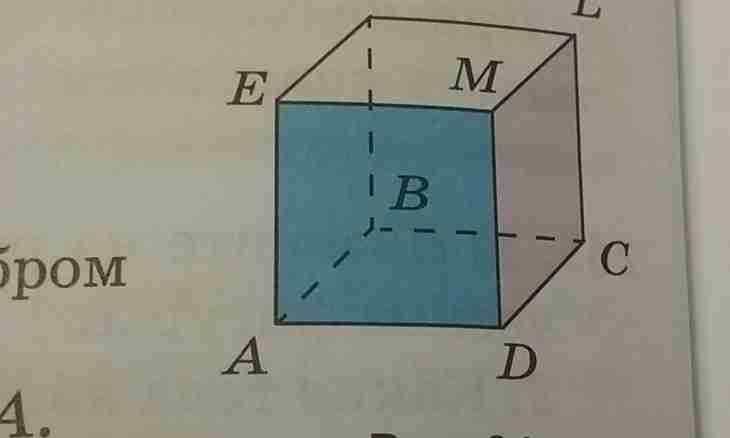The parallelepiped is a prism in which basis the parallelogram lies. It consists of 6 sides, 8 tops and 12 edges. The opposite sides of a parallelepiped are equal among themselves. Therefore finding of surface area of this figure comes down to finding of the areas of three of its sides.
It is required to you
- Ruler, protractor.
Instruction
1. Define parallelepiped type.
2. If all its sides squares, then before you a cube. At a cube all edges are equal among themselves: a=b=c. From a statement of the problem define what length of an edge is equal to and. Find the surface area of a cube, having increased the area of a square with the party and by quantity of sides: S=6a². Sometimes in a task, instead of edge length, d cube diagonal is set. In this case calculate the area of a figure on a formula: S=2d².
3. If all sides of a parallelepiped rectangles, then it is a rectangular parallelepiped. Polnaya Square of its surface is equal to the doubled sum of the areas of three sides perpendicular each other: S=2(ab+bc+ac). Find lengths of edges and, b, with and calculate S.
4. If only four sides of a parallelepiped rectangles, then such figure the name carries a direct parallelepiped. The area of its surface consists of the areas of all its sides: S=2(S1+S2+S3).
5. Find what the value of heights of all parallelograms of which this parallelepiped consists is equal to. Call h1 - height specified to the party and, h2 – to the party of b, and h3 – to side of the village.
6. Since in height rectangles by the sizes coincide with one of the parties (for example: h1=b, either h2=c, or h3= a), surface area of a rectangular parallelepiped calculate in such ways: S=2(ah1+bc+ac) =2 (ab+bh2+ac) of =2 (ab+bc+ch3).
7. Sometimes in a statement of the problem the tilt angle of one of the parties is set. Or there is an opportunity to measure it by a protractor. Let α – a corner between an edge of an and b, β - between b and c, γ – between an and c.
8. Then for finding of surface area use a formula: S=2 (absinα+bc +ac) = 2 (ab +bcsinβ+ac) = 2 (ab +bc +acsinγ). Look at values of sine in Bradis's table.
9. If side sides of a parallelepiped are not perpendicular to the basis, then before you an inclined parallelepiped. Determine heights of h1, h2 and h3 (see p5) and find surface area: S=2(ah1+bh2+ch3).
10. Or, knowing corners α, β and γ (see item 7), calculate the area on a formula: S=2(absinα+bcsinβ+acsinγ).
